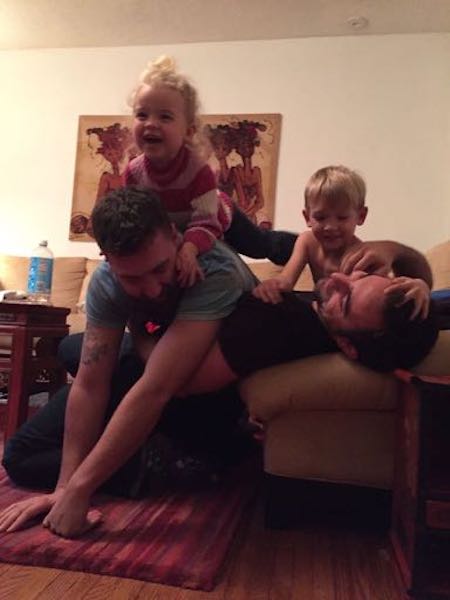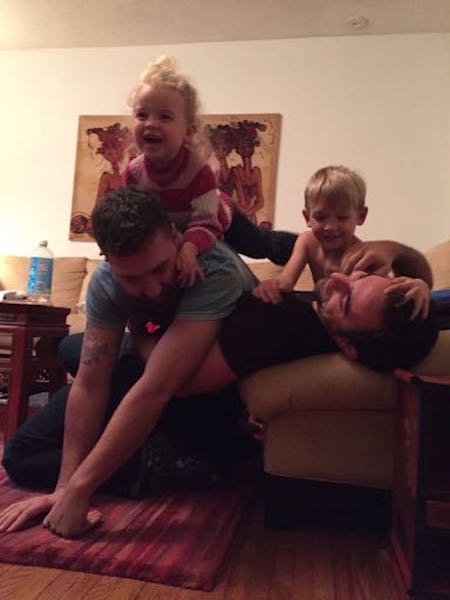First it’s play dates, next thing you know, it’s sleepovers. Does the stress ever end?
No, it doesn’t, not when you’re a parent.
Kids love playing with their friends, as evidenced by their love of play dates at a very early age. Soon, though, they grow bored of just spending a few hours at their friends’ homes. As your children get older, they will utter the words “sleep over” just before you break out into a cold sweat.
For those of us who have been there, the thought of your child spending the night at someone else’s home can be quite anxiety-producing. After all, we won’t be there to watch over them, make sure they’re safe and be that comfort in the night just in case they have a bad dream. While we want to be everything to our child, we realize that we can’t always be, and that sooner or later we’ll have to let them venture out into the world, without us. Sleepovers are often the first instance of this fact becoming a reality.
That being said, the idea of your child spending the night at her friend’s home doesn’t have to signal the onset of a panic attack. Kids go to sleepovers, they have a great time and, for the most part, they come home just fine. If your child is asking you for permission to spend the night at a friend’s home, read on and make sure you ask the right questions. You may have heard them before: Who, What, Where, When and Why. Instead of asking them from a journalistic standpoint, add them to your parenting roster and make sure you get the answers you need.
The Five Questions Parents Should Ask Before Sending Their Child to a Sleepover
1) Who — Whose sleepover is it, anyway? That’s what you really need to know before your child walks out the door to sleep over at her friend’s house. Just as you wouldn’t leave your child in the hands of a stranger in any other instance, the sleepover is no different. Know who the parents are, speak to them or meet them before the date if you can, and make sure that you’re completely comfortable before giving the green light to the date. In addition to this, are other children going to be at the sleepover or is it just a one-on-one thing? If other kids are going to be there, it’s worthwhile to find out if you know them and if you’re comfortable with this scenario. Accordingly, a chat with the parents and, if possible, a visit to the home is not out of line. After all, you need to feel comfortable about sending your child to this place for the night.
2) What — Before sending your child off for the evening, find out what’s on the agenda. Are the kids going to be playing video games? If so, are you cool with that? How about watching TV and movies? Do you have limits or rules on what your child can view? Does your child have dietary restrictions, allergies or specific foods that they shouldn’t eat? All of these questions should be discussed with the other parents and answered to your satisfaction before sending your son or daughter over for the night.
3) Where — The assumption is that the sleep over is going to take place at your child’s friend’s home, but are you certain? Something so obvious often seems like it doesn’t merit asking but you never know. Is there any plan for the kids to go to the friend’s relative’s home, or to another friend’s home during the course of the sleepover? Not sure? Ask. Similarly, are you OK if the kids go elsewhere while in the care of the friend’s parents? If you’re not comfortable with this possibility, it’s perfectly fine to speak up and let your thoughts be known.
4) When — A clear start and end time for the sleep over is key to everyone’s happiness, especially yours. The clock starts as soon as your child leaves your home, of course, but there should also be a specific time for pick-up. For the most part, it’s best to remember the classic rule about not overstaying one’s welcome, so shortly after breakfast the next morning is usually a good time to pick up your child. That’s assuming that you’ve agreed that you’re going to go and collect your child in the morning. Some parents may graciously offer to drop off your son or daughter when the sleepover has ended; just make sure to confirm the details so that your lines don’t get crossed.
5) Why — Is there an ulterior motive to the sleep over? It’s never a nice thought to suspect your child of being up to no good but we know that things are not always as they appear (this is particularly the case as kids get a bit older and crave more freedom). Does the friend’s household provide more “freedom,” from your child’s perspective? Are there activities, games, movies, more permissive attitudes or parenting styles that don’t jive with yours? As noted in point #2, it’s prudent to chat with the parents about any and all concerns that you may have and be comfortable with your child being in the care of others for the evening. After all — it’s your child and at the end of the day, you have the right to say “yes” or “no” to any activity in which your child may be participating.
Sleepovers can be fun, exciting and an overall great time for your child. It can even provide you as a parent with a well-deserved break for an evening. By asking the right questions and feeling completely comfortable with the answers that you receive, both you and your child will experience an enjoyable and stress-free evening.
Do you have a story to share with our readers? We want to hear it! Sign up for our Spoke Contributor Network and start submitting your writing today.
Samantha Kemp-Jackson is a parenting writer, blogger, senior public relations advisor and mother of four including identical twin boys. As a cathartic outlet after she had her twins, she began putting her prose to digital paper and her blog - Multiple Mayhem Mamma - was born.














